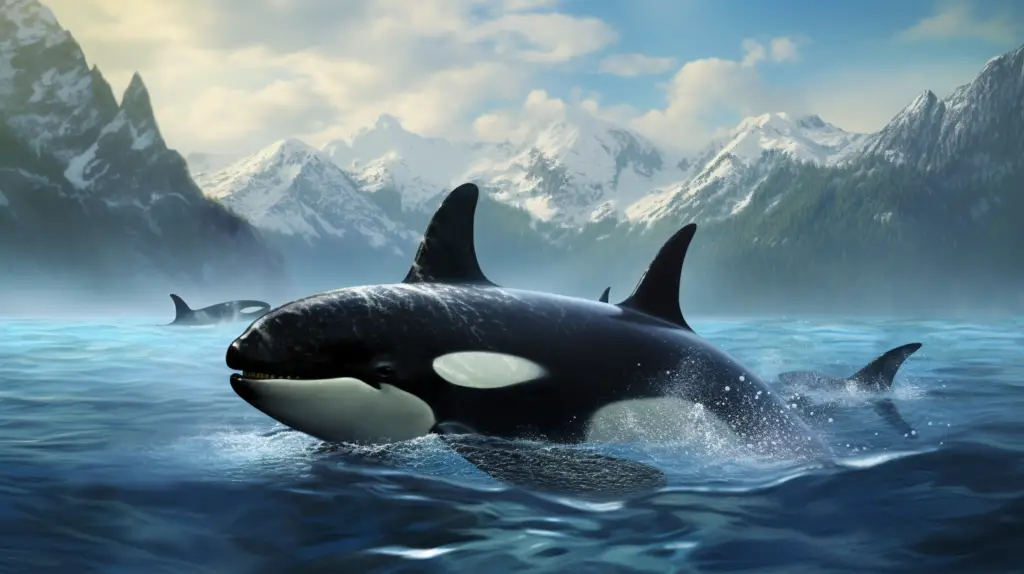The magnificent orca, or killer whale (Orcinus orca), is perhaps one of the most fascinating and enigmatic creatures inhabiting our oceans. Their distinct black and white coloration, their sheer size and power, and their complex social structures make them stand out in the vast oceanic world. Yet, despite their ubiquity in popular culture, there’s a wealth of intriguing details about these marine mammals that many people are not aware of.
To help bring some of these facts to light, we delve into a compendium of 25 interesting facts about orcas, each one contributing to a more profound understanding of these intelligent and awe-inspiring creatures.
1. Orcas, or killer whales, are the largest species of the dolphin family. They can grow up to 32 feet in length and weigh as much as 6 tons.
2. They are found in every single ocean of the world, making them the most widely distributed mammal after humans.
3. Orcas are incredibly versatile eaters. Depending on their cultural groups, known as ecotypes, they can feed on fish, seals, sharks, and even other whales.
4. Orcas are known for their high intelligence and ability to solve problems. Some of them have even been seen using tools, like using fish as bait to catch birds.
5. Unlike most dolphin species, orcas live in matriarchal societies, where elder females lead pods and pass knowledge down to younger generations.
6. Orcas have distinct “dialects.” Different pods communicate using a unique set of vocalizations, which offspring learn from their mothers.
7. An orca’s lifespan can vary significantly depending on its sex. Females typically live around 50 years but can live as long as 100 years, whereas males usually live about 30 years.
8. Orcas are one of the fastest marine mammals, capable of reaching speeds up to 34.5 mph.
9. Each orca’s dorsal fin is unique, much like a human fingerprint, which allows researchers to identify individuals.
10. Orcas have strong family bonds. They are known to stay in their birth pod for their entire lives.
READ MORE: 25 Facts About Hammerhead Worms: All You Need to Know
11. Unlike any other marine mammal, orcas can suffer from a condition similar to human menopause, with females losing their ability to reproduce but continuing to live for many decades.
12. Orcas use echolocation to hunt and navigate in the ocean. They produce clicking sounds and listen for the echo to understand their surroundings.
13. In the wild, orcas are apex predators, meaning they are at the top of the food chain and have no natural predators.
14. Different populations of orcas specialize in different hunting techniques, reflecting a form of “cultural” variation.
15. Orcas are known to “play” with their food, often tossing seals or other prey into the air before eating them.
16. They are highly social creatures. Some pods consist of as many as 40 members.
17. The gestation period for orcas is about 17 months, one of the longest for any animal species.
18. Orcas’ color pattern aids in hunting. The white patch is thought to distract prey, while the black is for camouflage.
19. Orcas display behavior like breaching (jumping out of the water) and tail-slapping, possibly as a way of communication or just playfulness.
20. In terms of sleep, orcas have a unique method where they rest one half of their brain at a time. This allows them to keep moving while still catching up on rest.
21. Each orca pod has a unique hunting style, which is learned behavior and passed down through generations.
22. Orcas have a large brain with an impressive encephalization quotient (brain size relative to body size), indicating high cognitive abilities.
23. Killer whales have been known to help humans by driving fish towards shore and even saving humans from shark attacks.
24. Orcas can dive up to 1,000 feet deep, but they are often seen at the surface.
25. Lastly, despite their fearsome nickname “killer whales,” there are very few recorded cases of orcas attacking humans in the wild.
Orcas are not only powerful and efficient predators but also complex and intelligent creatures with distinct cultures, behaviors, and social structures. Their fascinating lives beneath the ocean’s surface remind us of the importance of marine conservation and the vast amount of knowledge we have yet to uncover about our world’s oceans.



